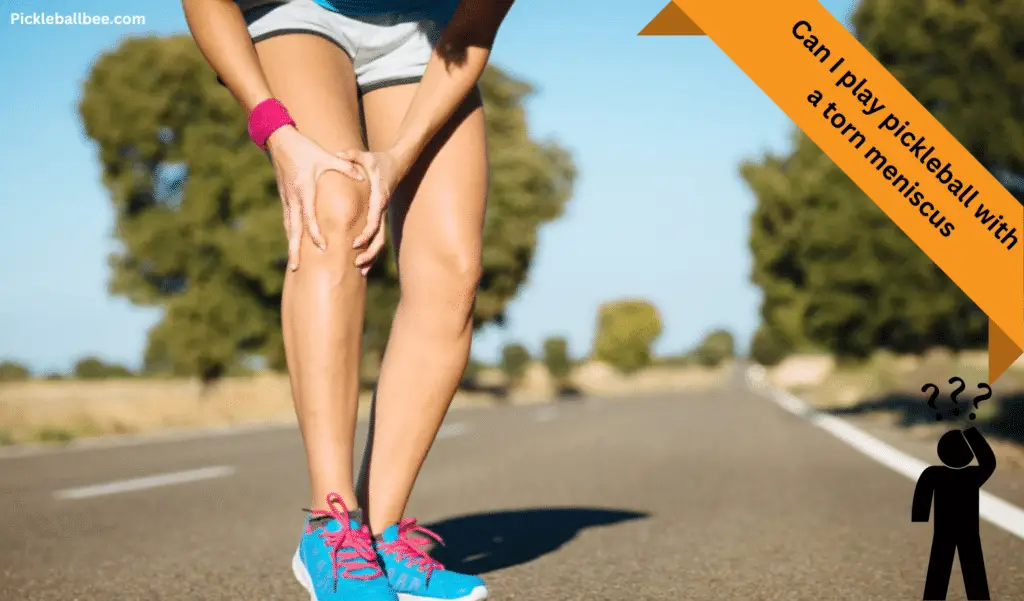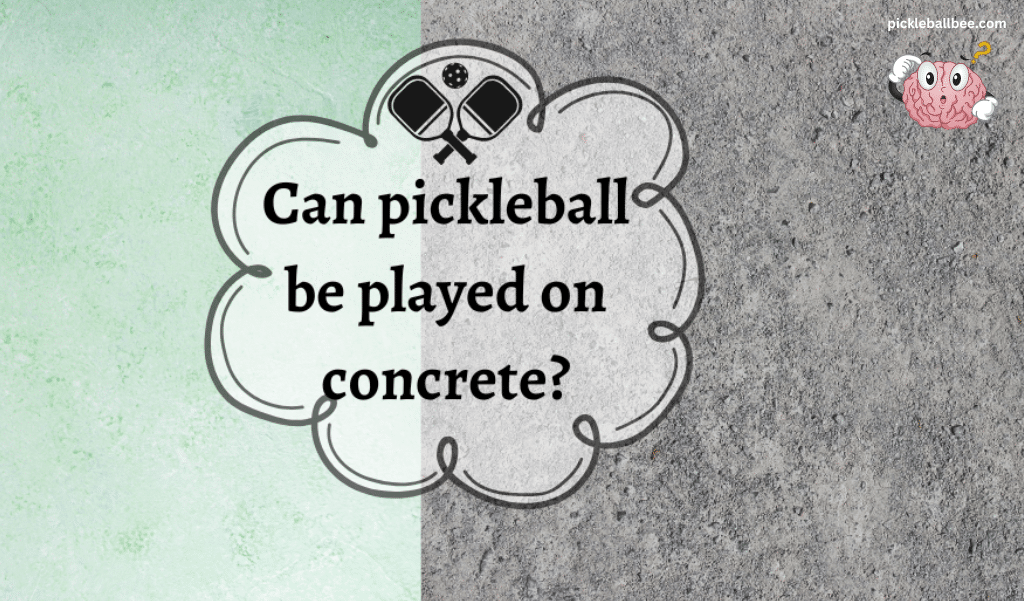
Are you interested in playing pickleball but don’t have access to a court?
Table of Contents
Can Pickleball Be Played On Concrete?
Concrete is an affordable and widely available surface option for outdoor recreation, so can it be used to play pickleball? The answer is yes! Playing pickleball on concrete has benefits and drawbacks, which we will discuss in this blog post.
Pickleball is a popular sport that has grown in popularity in recent years. This game is played on an outdoor court, typically made of asphalt or concrete. While concrete may not be the ideal surface for a pickleball court, it can be used with some precautions.
The main benefit of playing pickleball on raw concrete is that it’s an affordable and widely available option.
Why Is Raw Concrete a Poor Choice for Pickleball Courts?
Let’s dive into why raw concrete isn’t the best call for pickleball courts. Here are five points to chew on:
- Harsh on Joints: Concrete’s hard-as-nails nature isn’t kind to your joints. When you’re on the court, you want a surface that’s forgiving. Concrete? It’s like playing on a stone slab – not great for your knees and ankles.
- Slippery When Wet: Think about a rainy day on a concrete court. Slippery doesn’t even begin to cover it. It’s like an ice rink out there, but without the skates. You’d end up slipping and sliding more than actually playing.
- Weather Woes: Concrete is moody with weather. On a blazing hot day, it transforms into a sizzling frying pan for your feet. And in the cold, it’s like you’re playing on an ice cube. That’s not the consistent playing surface you’re after.
- Bounce Blues: Pickleball is all about that bounce – that perfect balance between control and responsiveness. Concrete, though, just doesn’t get the memo. The ball doesn’t bounce as well, making your game suffer.
- Lacks Performance: When you’re in the pickleball zone, you want a court that ups your performance, not hinders it. Concrete doesn’t have the give and grip you need. It’s like putting a sports car engine in a clunky old bus – it just doesn’t work.
But hold up, don’t let these points get you down. There are better options out there! Materials like asphalt or specialized pickleball court surfaces bring the bounce, grip, and comfort you crave. They’re like the Goldilocks of court materials – just right for a fantastic game.
How to play pickleball on raw concrete?
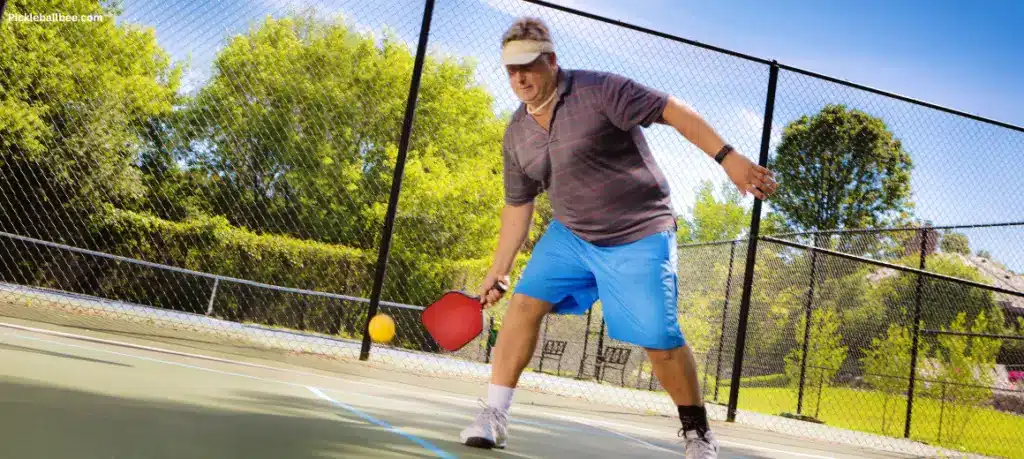
When playing pickleball on concrete, there are certain precautions you should take to ensure your safety and maximize your enjoyment.
Here are some tips on how to play pickleball on concrete:
1. Choose a flat and smooth concrete flooring surface.
2. Use an outdoor rug or mat to cushion and reduce slipping.
3. Wear protective clothing, such as long pants and appropriate shoes.
4. Use the right ball – a lighter ball will bounce better on softer padding than a concrete base.
5. Inspect the court for any potholes or cracks that could cause injury.
6. Stay hydrated! Concrete gets very hot in direct sunlight, so stay hydrated while playing.
By following these tips, you can enjoy playing pickleball on concrete while minimizing the risk of injury. While it’s not the ideal surface for a pickleball court, concrete is an affordable and widely available option for outdoor recreation. So get out there and have fun constructing pickleball courts!
Happy Pickling!
Benefits of playing pickleball on concrete:
Playing pickleball on concrete does have certain advantages. One of the main benefits is that it’s an affordable option for outdoor recreation. Concrete is also a more durable surface than asphalt, meaning it will last longer with fewer repairs. Additionally, the game can be adapted to uneven surfaces or potholes, so you don’t have to worry about playing on a perfectly even surface. Finally, it is usually cooler than asphalt and more comfortable for players in hot climates.
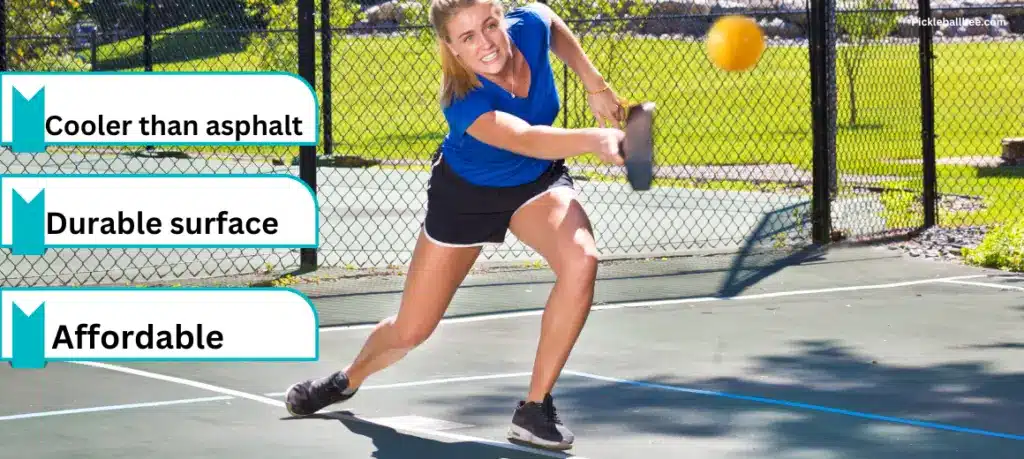
Here are some of the benefits of playing pickleball on concrete:
Affordable and widely available
Durable surface
Adaptable to uneven surfaces or potholes
Cooler than asphalt in hot climates
easy to maintain and clean
Concrete is a faster surface than asphalt, making it great for experienced players.
Concrete courts are ideal for professional-level play.
Prons of playing pickleball on concrete?
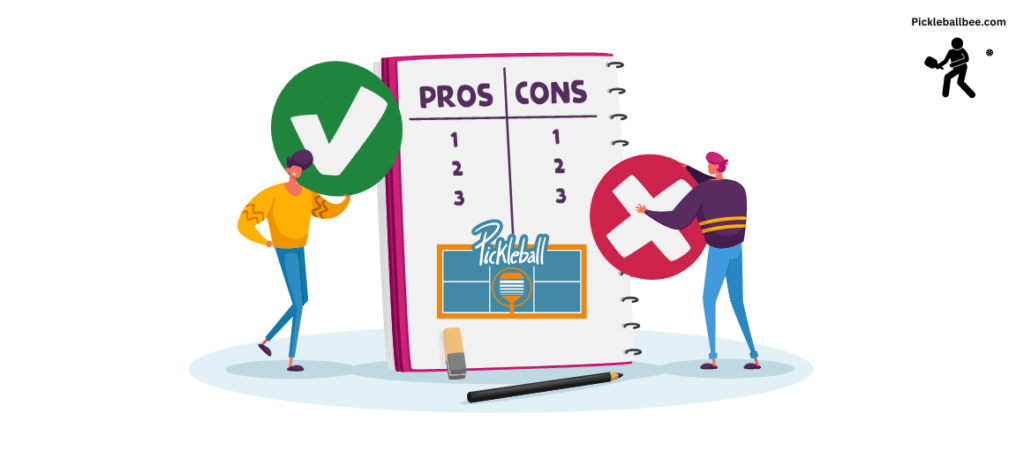
There are many benefits to playing pickleball on a raw concrete surface. One of the most apparent advantages is that it’s an economical way to enjoy the game since you don’t need to buy or maintain an expensive court.
Additionally, raw concrete offers more stability and control than other surfaces, making it easier for players to practice their tactics and aim. It also gives players more consistency in ball bounce, meaning they can develop their skills faster.
Since raw concrete is harder than other court surfaces, so it’s less likely to become damaged over time. This means you can play on a concrete pickleball court without fear of wear and tear. Concrete pickleball surfaces can be painted to provide a vibrant and colorful playing field for all players.
Finally, concrete outdoor pickleball courts are incredibly durable and require little maintenance. This makes them ideal for outdoor facilities and recreational parks that may not have the resources or time to upkeep and repair more intricate court surfaces.
Cons of playing pickleball on concrete:-
Though there are many advantages to playing pickleball on a concrete surface, there are also some drawbacks. One of the main problems with a concrete or floor surface is that it’s tough and unforgiving, making the game uncomfortable for players. Additionally, since concrete offers more consistency in the ball bounce, it can make games less competitive and less exciting.
Concrete is also a slippery surface, making it difficult for players to get a good grip on their racquets when playing. Furthermore, concrete courts can become extremely hot during summer, making them unpleasant to play on.
Finally, concrete pickleball courts require more planning and setup than other court surfaces. Since they’re not as portable, they must be marked off in a specific way and can take longer to set up before use.
Overall, playing pickleball on a concrete surface can have advantages and disadvantages depending on the individual needs of each player. While concrete pickleball courts offer more stability and control, they can also be uncomfortable and challenging to maintain. Ultimately, it’s essential to evaluate the pros and cons before deciding if you choose to play pickleball on a durable concrete surface.
Safety concerns when playing on concrete pickleball courts?
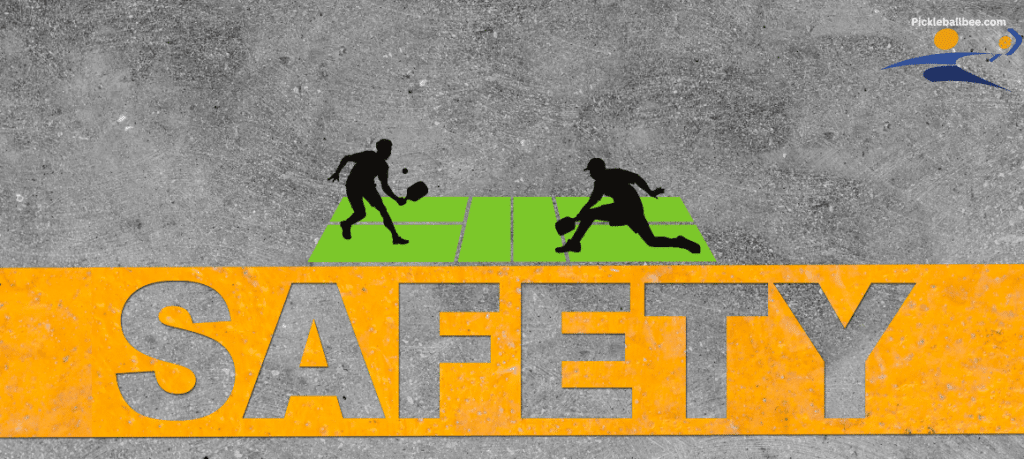
When playing on concrete pickleball courts, it’s important to consider potential safety concerns. The pickleball court’s hard surface can cause severe injuries if players land or fall awkwardly. It is also possible for the concrete surface to cause abrasions and cuts if players are not wearing appropriate protective gear.
Players should wear the proper shoes for playing on a concrete court. Shoes should have non-slip soles to provide the best grip and traction possible. It is also important to use appropriate padding or braces if needed, such as knee or elbow pads, to prevent injury(torn Meniscus). Players should also be mindful of their surroundings and avoid running into any obstacles or walls on the court.
In addition, players must warm up and stretch before playing to reduce the risk of injury. Finally, using appropriate lighting when playing at night can also help keep players safe while playing on a concrete pickleball court.
Conclusion:
Playing pickleball on a concrete court can be a great choice for players looking to develop their skills and practice their tactics. These courts offer more stability and control than other surfaces, making them ideal for dedicated practice. Additionally, they are low-maintenance and extremely durable. However, it is also a harder surface than other court materials, meaning players must take extra precautions to avoid injury. With the right preparation and safety measures, pickleball can be a great game for all players on any surface.
FAQ:-
1. Can you play pickleball on any surface?
Yes, pickleball can be played on almost any surface. The most common surfaces for playing pickleball are wood, concrete, and asphalt. Each proper pickleball court surface has its pros and cons, so it’s important to evaluate them before deciding which one is best for you.
2. Is playing pickleball on concrete safe?
Yes, playing pickleball on a flat or concrete surface is generally safe as long as the proper safety precautions are taken. Players should wear appropriate footwear with non-slip soles, use appropriate padding or braces if needed, and warm up and stretch before playing to reduce their risk of injury. Using appropriate lighting when playing at night can also help keep players safe.
3. Are concrete pickleball courts hard to maintain?
No, concrete pickleball courts do not require much maintenance. The court may need to be swept occasionally to remove debris or dust, but no unique cleaning products or treatments are necessary. Additionally, since it is a very durable material, it is unlikely that the court will need to be replaced or repaired.
4. Is concrete or asphalt better for a pickleball court?
Asphalt courts are cheaper and quicker to construct. Concrete courts are longer lasting, less frequent, and crack-resistant. Asphalt courts have a major drawback, as well as cracking concrete. Concrete cracks grow not as fast in the winds as asphalt cracks.

